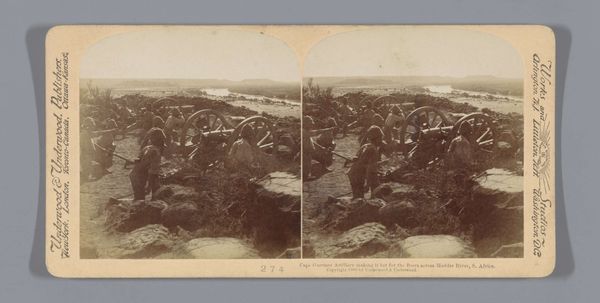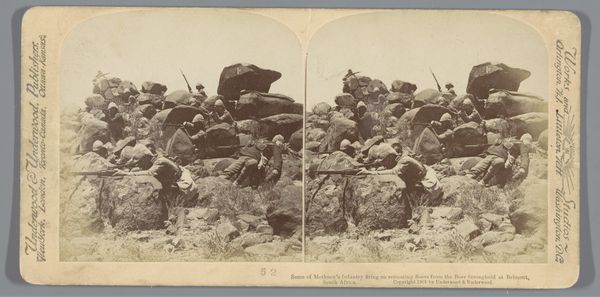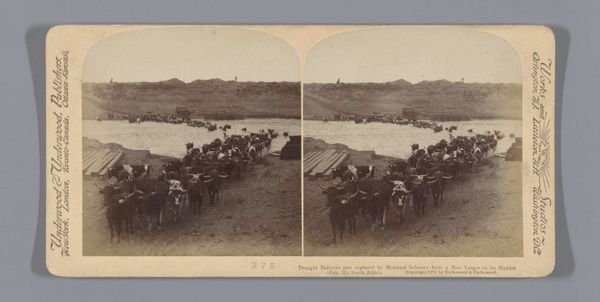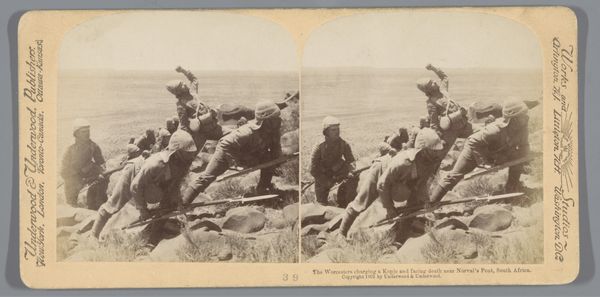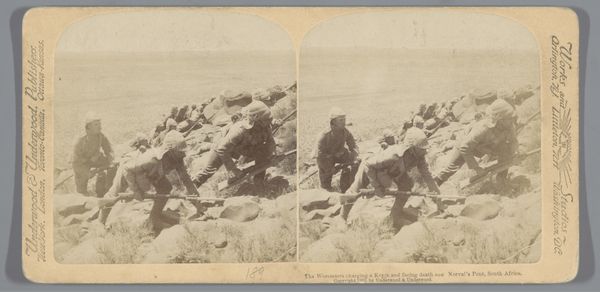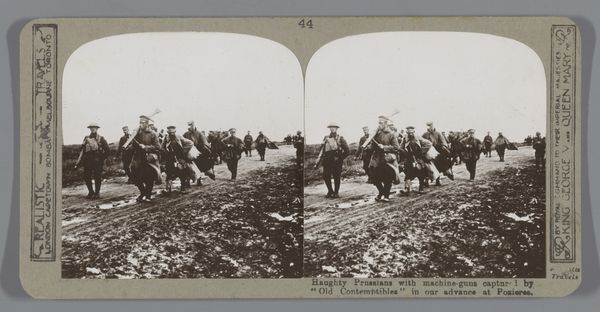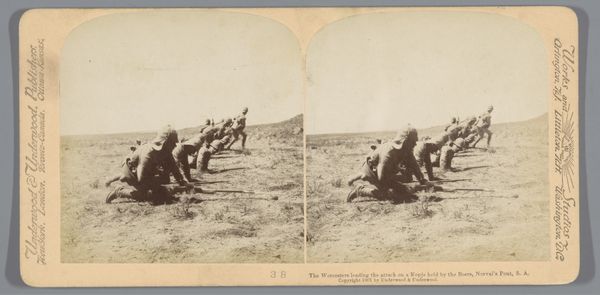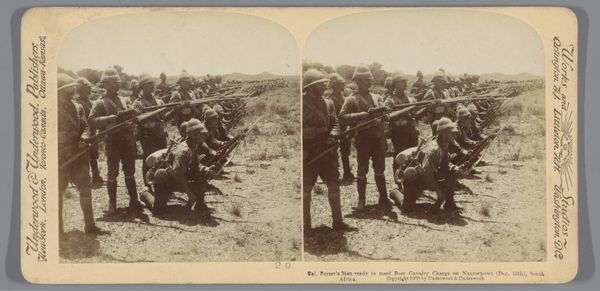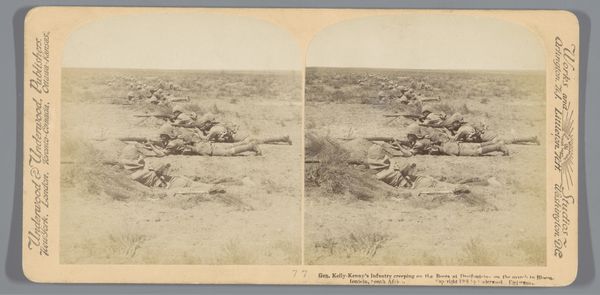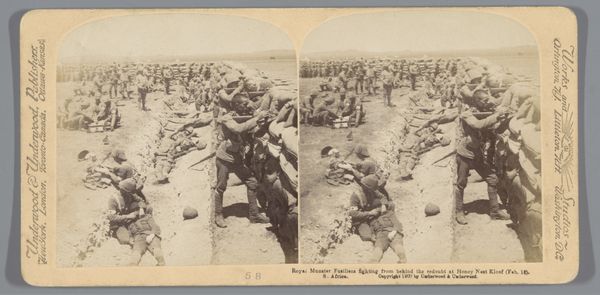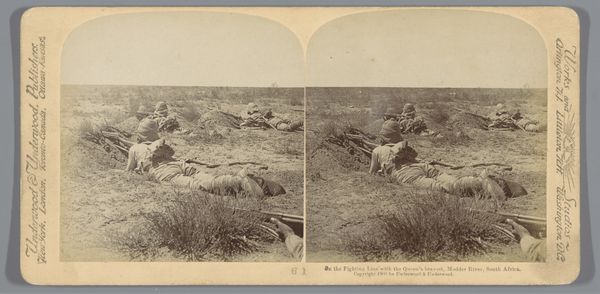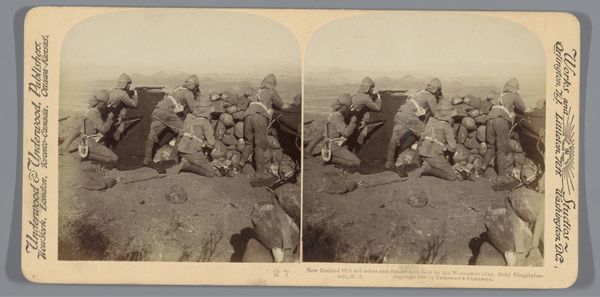
print, photography, gelatin-silver-print
#
portrait
# print
#
landscape
#
photography
#
coloured pencil
#
group-portraits
#
gelatin-silver-print
#
history-painting
#
realism
Dimensions: height 87 mm, width 177 mm
Copyright: Rijks Museum: Open Domain
Editor: This is a photograph from 1900, titled "British Soldiers in Trenches During the Boer War in South Africa." It's a gelatin-silver print and quite unsettling. What I immediately notice is the stark contrast between the barren landscape and the deep, man-made trenches where these soldiers are positioned, almost entombed. What stands out to you in this piece? Curator: This image, while seemingly straightforward in its depiction of trench warfare, speaks volumes about the complex socio-political landscape of the time, doesn't it? Consider the colonial project itself: the scramble for Africa, the imperial ambitions of Britain, and the dispossession of indigenous populations. The Boer War was a brutal conflict fueled by resources and power. Who benefited, and who paid the price for that alleged progress? Editor: That’s a great point. It's easy to look at it as a historical document without really thinking about the people involved. The phrase "British soldiers" almost sanitizes the whole affair. Curator: Exactly. It invites us to question the very notion of heroism and sacrifice so often associated with war, right? What are the long-term impacts on those who were colonized, those whose land was fought on? Think about the narrative of the oppressor, and where it often stands in for a wider discussion of injustice. Who gets remembered, and how are they remembered? Editor: I see what you mean. It makes you consider whose perspective we're actually viewing. And to wonder what the other side looked like. Curator: Precisely. This photograph prompts critical dialogue. We can appreciate it as a record while also questioning the underlying power structures it represents and their reverberations even today. I think it's key to always consider how such moments and images inform ongoing global power dynamics. Editor: Thanks for sharing that perspective; I now understand the photo to represent more than just war and history.
Comments
No comments
Be the first to comment and join the conversation on the ultimate creative platform.
